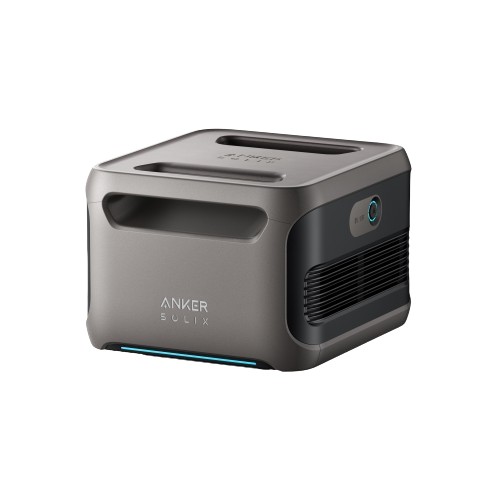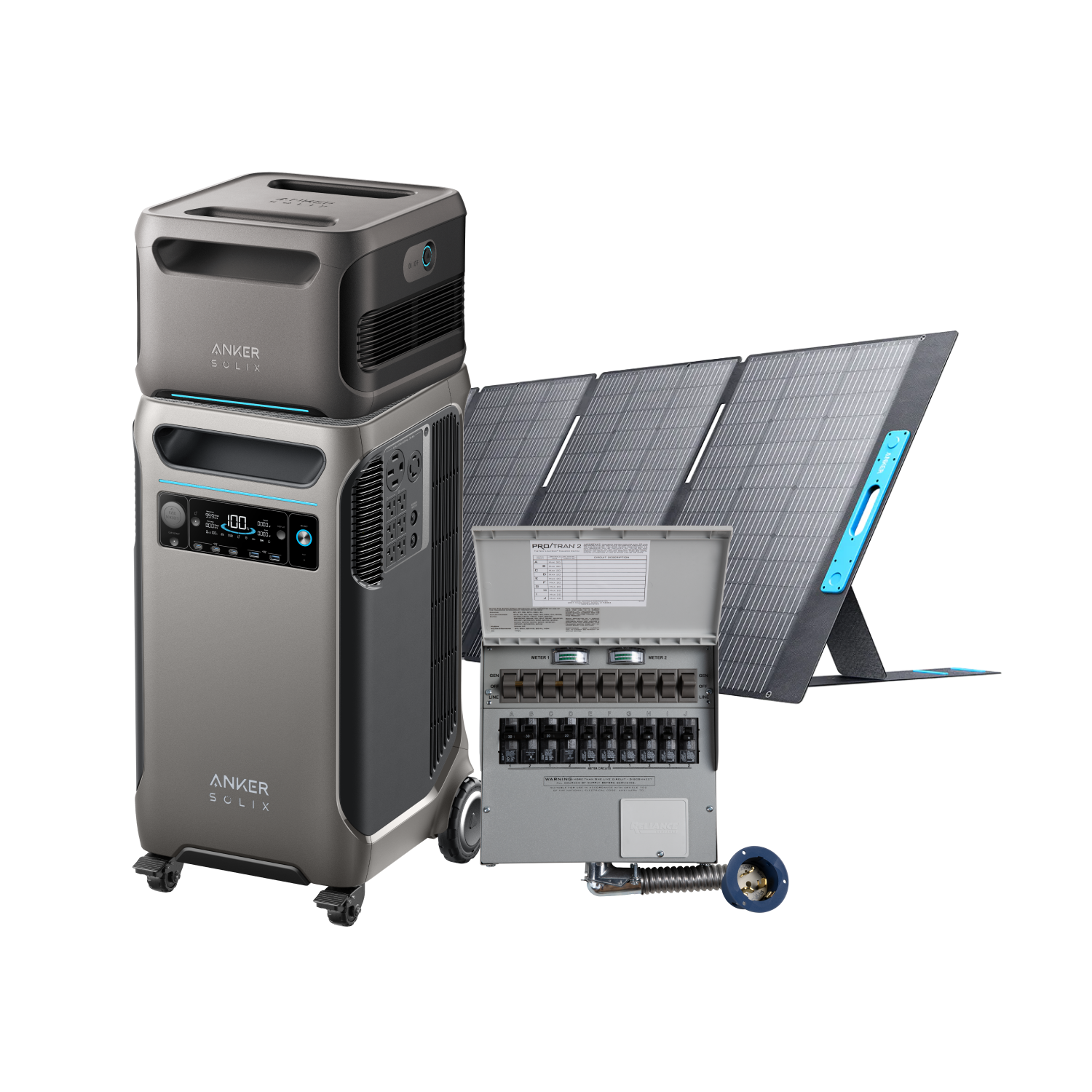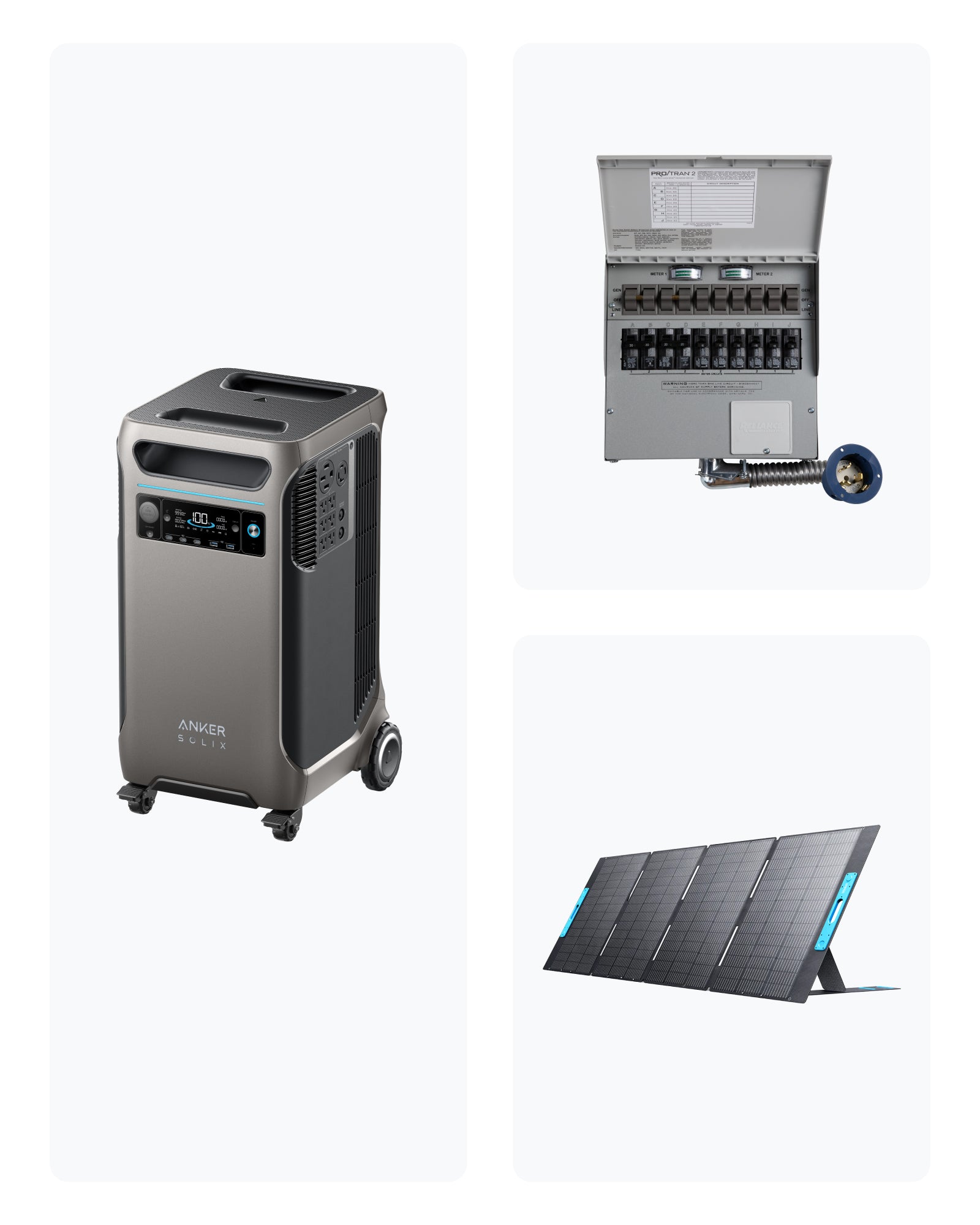1
/
of
3
beta-anker-ca
Anker SOLIX F3800 + Battery + Backup Kit + 400W PV Panel
Anker SOLIX F3800 + Battery + Backup Kit + 400W PV Panel
Regular price
$9,996.00 CAD
Regular price
Sale price
$9,996.00 CAD
Unit price
/
per
Shipping calculated at checkout.
Couldn't load pickup availability
Product features:
- Designed with plug&play home backup capability. (Accessories sold seperately)
-
6000W, 120&240V split-phase output in one unit for power-hungry appliances.
- 3.84-26.9kWh expandable capacity with up to 6 expansion battery BP3800.
-
Scaling up to 12000W, 53.8kWh for any extended power outages.
- 2400W solar input, allowing for a charge of 0 to 80% in just 1.5hrs by sunlight.
- Equipped with NEMA 14-50 & L14-30 outlet: Directly charge your EV & RVs
- Smart energy monitoring through App control by Bluetooth and WiFi.
- Long-lasting LFP battery & 5-year hassle-free warranty
- Industry-leading high-quality components ensuring 10 years of lifespan.
Share





